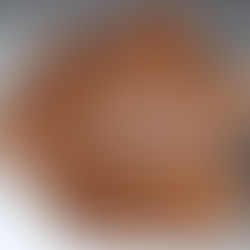Large Birch Root Ball
I like bowls that have unusual shapes. One way to turn an unsymmetrical bowl is to use the lowest part of a tree that has large roots protruding out into the ground. I cut an 8" thick slab from the bottom of an old birch tree. The slab was cut just above the ground level. This can be tough on a chain saw since there was dirt and small stones in the wood. I mounted this 23" diameter slab on my Stubby 1000 lathe for an end grain turning. The lower part of the slab had some rot (see photo below) which is OK since this will be the top of the bowl. It did require securing a piece of plywood for attaching a face plate to the piece.
The above photos show the process of turning the bowl. The wood was spalted and punky in places so there was some tear out from the turning tools. I tried to minimize the tear out by applying thin cyanoacrylate glue to the punky areas while turning, but the wood was still very rough even with frequent sharpening of the gouges. I decided to treat both sides of the rough turned bowl with penetrating Boat epoxy (diluted with some acetone) to harden the wood for eventual sanding. This piece has been sitting in my shop for over a year. Everyone who saw it loved the shape but I knew that sanding this bowl would take an enormous amount of work. I finally decided to sand it to see what the wood looked like. To my surprise, after sanding for about 3 hours with 80 grit Merka Arrant ACE sanding disks (a lot of them) the wood started showing nice colors and spalting patterns. I think I sanded off more than ⅛ inch of wood. The epoxy helped keep the punky areas solid. After two more days of sanding to 400 grit, a beautiful smooth surface emerged and oiling it brought out a lot of beauty and character. Was it worth all the effort? YES
The following images show various views of this spalted birch root ball bowl. The dimensions of the bowl: 21-23" diameter, 5.5" deep, ½ inch wall thickness.








































Comments